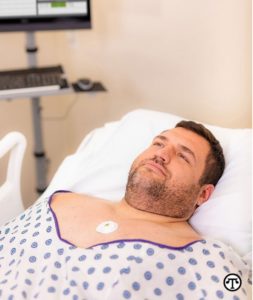Health, Home & Family
 Going Away? Tips To Keep Your Home Safe While You’re On Vacation
Going Away? Tips To Keep Your Home Safe While You’re On Vacation
(NAPSI)—Peace of mind is important to just about all homeowners, including when they’re away on a hard-earned vacation. When warm weather arrives, however, crime rates increase, according to a study published by the National Center for Biotechnology Information.
Fortunately, you may be able to reduce any vacation time stress by taking five steps to improve security—protect your windows, monitor your doors, secure your AC, make your house a difficult target and stay in the loop about what’s happening at home.
How to make it look like someone is home, even when you’re away
- Stop your mail. Nothing says “there’s nobody home” like an overstuffed mailbox and a pile of newspapers on the front porch. You can fill out a simple form with the United States Postal Service asking it to hold your mail. Or, perhaps better yet, have a trusted neighbor stop by to pick it up.
- Leave dog toys in the front yard. Even if you don’t own a dog, you can give a burglar pause by making him or her think that you do.
- Maintain a well-kept yard. Remove tree branches that give easy access to top floor windows and cut back tall shrubs that make it easy for burglars to hide behind.
- Add outdoor motion sensor lights to scare away those trying to walk into your yard and peek inside. With smart lighting technology, you can program your lights to come on even when you aren’t home. This feature has an advantage over automated timers because you can turn the lights in your home on or off as you please from anywhere with your Internet-connected device, or set routines through your home automation service, such as ADT.
- Integrate your wireless doorbell with your lights for further security benefits. Have the doorbell trigger an inside light to give the illusion that someone is home, since burglars prefer dark areas for stealth.
 (NAPSI)—One of the best and most effective ways to benefit from nonpsychoactive, THC-free CBD is to use it on the largest organ of your body: your skin. CBD oil is the nonpsychotropic component of marijuana and hemp, well-known for relieving aches and pains when applied topically. Now, it’s found in skin care products such as the luxury line from Mermaid Wizdom—and with good reasons.
(NAPSI)—One of the best and most effective ways to benefit from nonpsychoactive, THC-free CBD is to use it on the largest organ of your body: your skin. CBD oil is the nonpsychotropic component of marijuana and hemp, well-known for relieving aches and pains when applied topically. Now, it’s found in skin care products such as the luxury line from Mermaid Wizdom—and with good reasons.
Here are three:
- Acne: CBD oil is an anti-inflammatory with the ability to help calm skin. Because acne is an inflammatory condition, research indicates CBD’s soothing properties can help diminish breakouts and reduce redness. Recent studies show that CBD may also decrease excessive oil production.
- Aging and Wrinkles: CBD oil’s antioxidant properties can help lessen the visible signs of aging. It’s rich in vitamins A, C and E. Vitamin A stimulates the cells responsible for producing tissue that keeps skin firm. Vitamin C stimulates collagen production. Vitamin E blocks free radicals from the body, to help slow down the aging process.
- Sensitive Skin: CBD oil has been found to sooth sensitive skin and studies indicate that it helps inhibit triggers of disorders such as psoriasis and eczema.
 (NAPSI)—A growing body of scientific evidence proves getting outside (i.e., being an “outsider”) is good for our health and well-being. Exploring and appreciating nature—in our own backyards, community parks and school yards—reduces stress, improves memory, boosts heart health, and offers a host of other benefits for our minds and bodies.
(NAPSI)—A growing body of scientific evidence proves getting outside (i.e., being an “outsider”) is good for our health and well-being. Exploring and appreciating nature—in our own backyards, community parks and school yards—reduces stress, improves memory, boosts heart health, and offers a host of other benefits for our minds and bodies.
“Having a living landscape of grass, trees, shrubs and flowering plants is good. Using this outdoor space to reap the health benefits it offers is even better,” said Kris Kiser, president and CEO of the Outdoor Power Equipment Institute (OPEI), whose Foundation created TurfMutt, an environmental education and stewardship program that teaches the value and benefits of the outdoors. “Getting outside, even for just 10 minutes, can do much to boost your mood, productivity, and quality of life.”
On its 10th anniversary, TurfMutt shares 10 easy ways you can enjoy nature in under 10 minutes. Continue reading
Pressure Ulcers Cost U.S. Healthcare $10.2 Billion and Contribute to Nearly 29,000 Hospital Deaths Each Year
But new technology can dramatically curb the pressure ulcer pandemic
(NAPSI)—American healthcare, renowned for pioneering new technology to save lives, has all but ignored one of the most costly and deadly Hospital-Acquired Conditions (HACs), which the federal government defines as preventable patient injuries.
While the number of other HACs has decreased by 8 percent, pressure ulcers have been resistant to improvement efforts. They continue to grow by 10 percent annually.
Pressure ulcers are both costly and deadly.
The U.S. Agency for Healthcare Research and Quality (AHRQ) reports that pressure ulcers add $10.2 billion to U.S. healthcare costs. As the chart above shows, pressure ulcers are associated with more than 45 percent of the nation’s 63,619 HAC-related deaths and are the leading contributor to HAC-related deaths. Continue reading
 (NAPSI)—April is Car Care Month—bringing attention to the importance of preventative car maintenance. It’s the perfect time for you and your mechanic to perform a checkup on your vehicle after snow, rain and cooler temperatures have taken their toll.
(NAPSI)—April is Car Care Month—bringing attention to the importance of preventative car maintenance. It’s the perfect time for you and your mechanic to perform a checkup on your vehicle after snow, rain and cooler temperatures have taken their toll.
Change Oil, Fluids and Air Filter
Professional mechanics recommend changing your oil every 5,000−10,000 miles to keep the engine running smoothly. Check the owner’s manual for instructions before you get started.
Mechanics also recommend replacing your vehicle’s air filter at least once a year. Check your vehicle’s instruction manual to locate the filter, open its case and review how it’s positioned. Remove the old air filter and insert the new one in the same position, before closing the metal clips.
If you don’t feel comfortable changing your own oil and air filter, your mechanic can change them for you. While you’re there, also have your power steering, brake, transmission and windshield washer fluid levels checked. Continue reading
 (NAPSI)—As your wisdom grows with age, so can the number of pill bottles in your medicine cabinet. For those “young-at-heart” seniors, sticking to healthy habits is the key to aging well. With some simple steps, you can keep a healthy routine that also gives you more time to do the things you love. Joe Koren, pharmacy manager at Walgreens, shares his top five tips for managing your health with a busy schedule:
(NAPSI)—As your wisdom grows with age, so can the number of pill bottles in your medicine cabinet. For those “young-at-heart” seniors, sticking to healthy habits is the key to aging well. With some simple steps, you can keep a healthy routine that also gives you more time to do the things you love. Joe Koren, pharmacy manager at Walgreens, shares his top five tips for managing your health with a busy schedule:
- Consult the experts
You know to go for regular checkups with your general practitioner, but don’t forget that pharmacists can also be accessible experts to answer questions about your health. In fact, your pharmacist is a licensed professional who provides different health care services including immunizations and can help you understand why and how to take your medications to support effective treatment. Some pharmacies offer extended hours, and 24-hour chat with pharmacy staff is available whenever you need it. Many locations also have health care clinics to treat minor injuries and illness, which can be a convenient and cost-efficient alternative to a doctor’s visit. Continue reading
 (NAPSI)—In the gig economy, many people take hobbies such as playing video games, travel or food and turn them into very lucrative side hustles.
(NAPSI)—In the gig economy, many people take hobbies such as playing video games, travel or food and turn them into very lucrative side hustles.
For example, the eSports market started as a community of online gamers and is now estimated to be a $1 billion industry with investors including ESPN and YouTube.
Four Steps Toward Fun And Profit
So how do you take your passion and turn it into cash? Here are four tips to see if you can turn your hobby into a generous source of income.
- Search Popularity—It’s important to know how popular your hobby is to assess whether there’s moneymaking potential. One way to gauge popularity is by looking at whether people are searching for it on Google. A free online tool, Wordtracker, can help you look at how many people are searching your hobby and items similar to your hobby. For example, if you search “food,” it shows that approximately 7.4 million monthly searches are done on food. This is definitely a passion you should explore to make money.
- Explore Social Fandom—Another way to determine whether your hobby can be a moneymaker is to look at communities on such social networks as Facebook, Twitter, Instagram and LinkedIn. You can search #food, #travel and so on or look for groups related to your hobby. See how many members or followers these top groups or most popular handles have to determine your potential fan base.
- Test Your Concept—Once you’re certain there’s interest, it’s time to test the market and see what sells. It’s quite easy to start your own eCommerce website or blog using platforms such as WooCommerce or WordPress. And if you’re not very tech savvy, that’s OK. There are companies such as Liquid Web that can fully manage and host your website or blog so you don’t have to worry about security or the site going down.
- Finally, Share Your Website—Let it be seen by those superfans you find on social media and your fellow hobbyists. Make it fun and enjoyable. Set goals each month and see how you do. Try new ideas, attend events, and talk about your website with everyone you meet.
 (NAPSI)—If you’re like 90 percent of shoppers, you consult the Nutrition Facts panel on food packages before you buy. To make it easier to make informed food choices, the U.S. Food and Drug Administration (FDA) has developed a new Nutrition Facts label. Here are the seven major new features:
(NAPSI)—If you’re like 90 percent of shoppers, you consult the Nutrition Facts panel on food packages before you buy. To make it easier to make informed food choices, the U.S. Food and Drug Administration (FDA) has developed a new Nutrition Facts label. Here are the seven major new features:
- Increased print size for “Calories.”
Calorie counts will be easier to see.
- Inclusion of “Added Sugars.”
The FDA currently defines added sugars as “sugars that are either added during the processing of foods, or are packaged as such, and include sugars (free, mono- and disaccharides), sugars from syrups and honey, and sugars from concentrated fruit or vegetable juices that are in excess of what would be expected from the same volume of 100 percent fruit or vegetable juice of the same type.” Sugar alcohols, or polyols, provide sweetness but aren’t counted as “added sugars” because they’re not sugar. These low-digestible carbohydrates can replace sugar as a lower-calorie alternative. Common polyols include erythritol, maltitol, sorbitol, mannitol, xylitol, lactitol, isomalt and hydrogenated starch hydrolysates. Continue reading
 (NAPSI)—Remember the Lorax, who spoke for the trees? Dr. Seuss’ tale laid important groundwork by encouraging the next generation to care about the environment. As Seuss wrote, “Unless someone like you cares a whole awful lot, nothing is going to get better. It’s not.” Regardless of age or ability, students who care “a whole awful lot” can become some of bees’ best advocates.
(NAPSI)—Remember the Lorax, who spoke for the trees? Dr. Seuss’ tale laid important groundwork by encouraging the next generation to care about the environment. As Seuss wrote, “Unless someone like you cares a whole awful lot, nothing is going to get better. It’s not.” Regardless of age or ability, students who care “a whole awful lot” can become some of bees’ best advocates.
With pollinators facing challenges including a lack of forage (food) that provides them with proper nutrition and habitat, we have a great opportunity to empower the next generation to “speak for the bees” and give them the tools to help. Continue reading
 (NAPSI)—If you have high blood pressure, consult your doctor or pharmacist about the safety of over-the-counter medicines. Some pain relievers and cold and flu medications may raise blood pressure. Always read medication labels and discuss alternative pain, fever or cold medicine with your doctor.
(NAPSI)—If you have high blood pressure, consult your doctor or pharmacist about the safety of over-the-counter medicines. Some pain relievers and cold and flu medications may raise blood pressure. Always read medication labels and discuss alternative pain, fever or cold medicine with your doctor.
Stay in the know about your car’s health with Hum by Verizon. The Vehicle Diagnostics feature can help you stay ahead of potential issues for more safety on the road and money in your pocket.
If you develop the nasal congestion, aches and fever of the flu, get a doctor’s advice right away. Using a phone, mobile app or the Web, you can access board-certified doctors through a telehealth solution such as Teladoc. Learn more at www.Teladoc.com/flu.
The not-for-profit American Red Cross shelters, feeds and provides emotional support to disaster victims; supports military personnel and their families; supplies about 40 percent of the nation’s blood; teaches lifesaving skills; and provides humanitarian aid. Learn more, including how to help, at www.redcross.org. Continue reading

